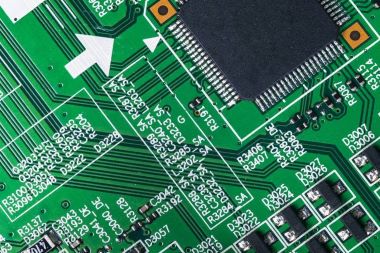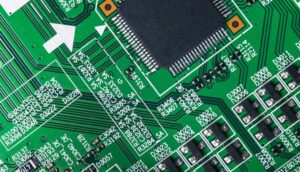What is screen printing?
The term screen printing comes from the process of using stencils on PCBs, also refers to PCB legends, to mark components and provide valid information.
How to do screen printing
Screen printing is the production of a screen-printing plate using hand engraved lacquer film or photochemical plate making by tensing a silk, synthetic fabric or metal screen onto a screen frame.
Modern screen-printing technology, on the other hand, uses light-sensitive materials to produce screen printing plates by photographic plate making methods.
Where to find screen printing?
Screen printing takes place mainly on top of the solder resist layer of the board and is one of the last steps in the manufacturing process.
Common colors used for screen printing are black, white and yellow, however, you can use other colors if necessary.
Although PCBs may technically function without a legend, the information provided by the silkscreen is essential to the user for final assembly, testing and troubleshooting.
Common information displayed in PCB silkscreens are
- Reference indicators to mark component types
- Manufacturer information, serial numbers, etc.
- Test points to aid testing and troubleshooting
- Component outline indication
- Marking of component type
- Component polarity indicator markings
How screen printing is done
Manual screen printing
This can be done with a line width greater than 7 mil and its alignment tolerance of 5 mil. It is not the most ideal option in terms of accuracy as the output depends on many factors such as the viscosity and age of the ink, room temperature, humidity, stroke pressure etc.
Liquid Photo Imaging or LPI
Use this method when the line width is greater than 4 mil. This provides a higher level of accuracy than manual screening. However, this has a longer set-up time and is known to use more ink.
Direct legend printing or DLP
This method is the most accurate but is more costly and is not suitable for silver panels. In addition, not all manufacturers have DLP printers.
To sum up
With great silkscreen printing helping to reduce the likelihood of errors, correct placement of components and providing additional information about the board.
Silkscreening helps to ensure that parts are assembled correctly and continue to function when they reach the consumer.
Explore KingPCB’s services
A detailed understanding of silk-screening can also reduce PCB costs, whether you are finalizing PCB details or just starting out.
KingPCB has always been a supplier of affordable, high quality PCBs in high volume, whether your requirements are large or small, contact us today to find out more about our capabilities.





